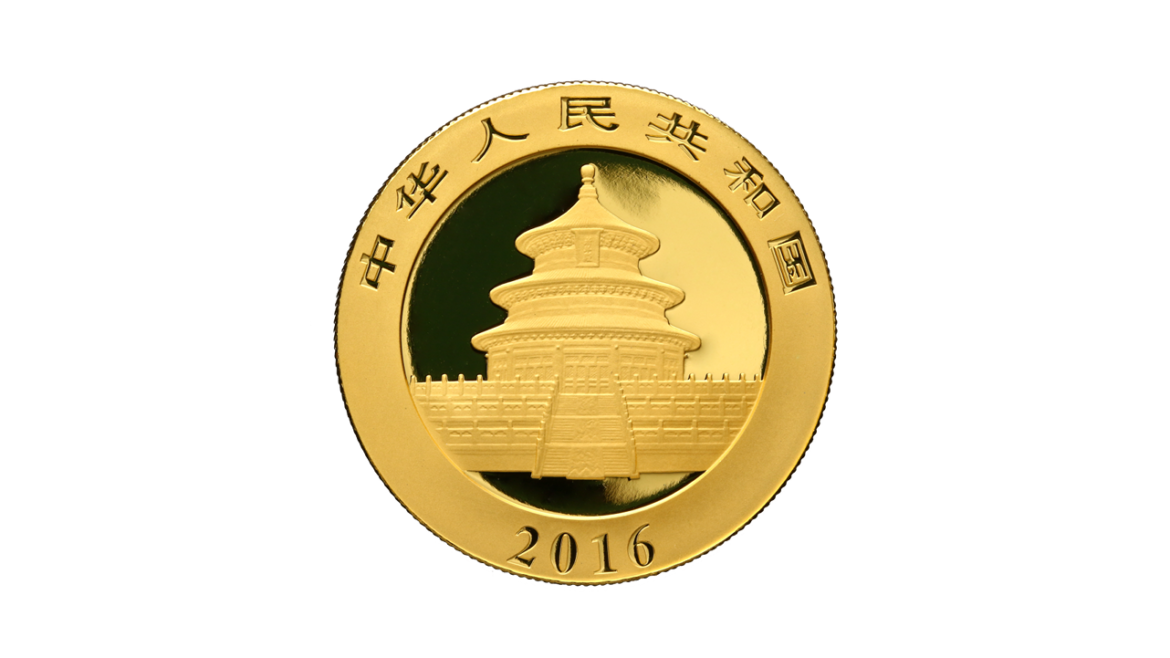Gold has all the potential to go unprecedentedly high. But silver will be gold on
Site:
Precious metals news
US Treasury Secretary Janet Yellen is scheduled to visit Beijing in early July for high-level economic talks with her Chinese counterpart, marking an important step in US-China relations. The trip, initially postponed, is part of the Biden administration's efforts to engage with China while prioritizing national security and shared values. The White House has briefed G7 allies on its approach, receiving broad endorsement. Yellen emphasized that US policies towards China aim to safeguard national security and values, rather than seek economic advantage.
Jun 27, 2023 - 09:27:58 PDT
Could a new BRICS currency challenge the dominance of the dollar? While obstacles exist, the push for de-dollarization and a joint currency gains momentum. BRICS countries seek to reduce reliance on the dollar and explore alternatives, including diversifying currency reserves with gold. The focus is on establishing an efficient payment system and potential currency interoperability. Challenges lie ahead, but the determination of BRICS nations to reshape the global financial landscape remains promising.
Fed Chair Jay Powell testified that inflation has come down but attributed it to factors other than monetary policy. He emphasized that the service sector, where the Fed's influence is limited, hasn't shown significant progress. Research suggests monetary policy has little impact on service sector prices. This raises questions about the effectiveness of the Fed's tightening measures and the government's authority to constrain credit.
Three of the largest bank failures in U.S. history occurred recently, raising concerns about the stability of the banking system. Truist Bank and Bank of America have experienced significant declines in market value. The merger of SunTrust and BB&T to form Truist Bank led to concerns about uninsured deposits and potential challenges in resolving a failure. U.S. Treasury Secretary Janet Yellen suggests more bank mergers may be necessary.
 Conference Board Confidence Spiked In June; Inflation & Recession Expectations Plunge
Conference Board Confidence Spiked In June; Inflation & Recession Expectations PlungeJun 27, 2023 - 08:35:50 PDT
Consumer Confidence rebounded significantly in June, reaching its highest level since January 2022, according to The Conference Board. However, despite the positive headline print, there are negative aspects to consider. Consumer inflation expectations for the next 12 months dropped to their lowest since December 2020, indicating concerns about rising prices. Additionally, buying plans for cars, homes, and major appliances slowed, possibly due to higher borrowing costs. While fewer consumers expect a recession in the next 12 months compared to May, concerns remain. The report poses a question about whether lower inflation expectations are sufficient for the Federal Reserve to maintain its pause.
"We are getting into a period where we have to recognise that inflation is taking too long to get down to target — that is my first uncomfortable truth — and that means that we risk inflation getting entrenched."
“We are getting into a period where we have to recognise that inflation is taking too long to get down to target – that is my first uncomfortable truth – and that means that we risk inflation getting entrenched,” she said. "Central banks must accept the 'uncomfortable truth' that they may have to tolerate a longer period of inflation above their 2% target," warns Gita Gopinath, deputy head of the IMF. Gopinath emphasizes the risk of a future financial crash or raising borrowing costs to combat stubborn inflation. She states, "In that environment is when you could see central banks adjusting their reaction function and saying 'OK, maybe we tolerate inflation being higher for some more time.'" Gopinath highlights the vulnerability of heavily indebted European governments to another financial crisis and the need to recognize the prolonged duration of inflation.
Since the end of the fake debt ceiling fight on June 2, the Treasury has borrowed an additional $700 billion pushing the national debt over $32 trillion. Looking at the interest rates on this new debt, it becomes clear that the US government has a big problem.
Jun 27, 2023 - 06:17:26 PDT
Treasury market faces challenges with a flood of new bills issuance, draining liquidity and increasing short-term yields. Investors finally see some yield, but big buyers are reducing holdings. Higher yields needed for increased debt may steepen the yield curve and impact mortgage and bond rates. Fed hopes for tighter financial conditions may get a boost from rising long-term yields.
Despite expectations of a decline, US Durable Goods Orders surprisingly jumped 1.7% month-over-month in May, marking the third consecutive month of growth. Year-over-year growth in durable goods orders reached 7.3%, the highest since October 2022. Excluding transportation, orders grew 0.6% month-over-month, surpassing expectations of no change. Additionally, core capital goods orders, a measure of investment in equipment excluding aircraft and military hardware, increased 0.7% in May. These positive figures contrast with the negative manufacturing survey data, posing a challenge for the Federal Reserve's desired economic trajectory.
Home prices in the U.S. saw a significant jump in April, marking the largest month-over-month increase since May 2022. The Case-Shiller home price index rose by 0.91%, surpassing expectations. The recovery in home prices is widespread across the country, with prices rising in all 20 cities before seasonal adjustments. However, mortgage rates remain high, posing challenges to the housing market. Yale economist Bob Shiller has cautioned that home prices are historically high and expects a potential downturn in the future. The surge in home prices is not aligned with the Federal Reserve's goal of normalization through tightening measures.
“If you give them an inch, they’ll take a mile. But they will take that mile inch by inch so that you don’t notice. Every crisis will be another excuse for taking one more inch of your freedom.”
 Banks Face Their Worst Losses Since the 2008 Crisis if Inflation Cannot Be Tamed: BIS
Banks Face Their Worst Losses Since the 2008 Crisis if Inflation Cannot Be Tamed: BISJun 27, 2023 - 05:57:24 PDT
The banking crisis, triggered by the collapse of major U.S. lenders, is far from over, according to the Bank for International Settlements (BIS). BIS officials have called for urgent action and a change in mindset among advanced economies, emphasizing the need to address soaring inflation and high levels of public and private debt. Failure to tame inflation could result in credit losses for banks comparable to the 2008 global financial crisis, with even smaller institutions impacting overall confidence in the system. The BIS also highlighted risks in the shadow banking system and expressed concerns about unsustainable government policies and the grim outlook for government debt.
Senior European Central Bank (ECB) staff are meeting in Helsinki to develop a new framework for controlling short-term borrowing costs, signaling a shift away from easy monetary policies. The meeting aims to address the challenges posed by high inflation, elevated interest rates, and an excess of over 4 trillion euros in liquidity within the banking system. Discussions will cover remunerating banks for minimum and excess reserves, potentially considering a zero deposit rate on mandatory reserves.
Central bankers, including Federal Reserve Chairman Jerome Powell and European Central Bank President Christine Lagarde, express concerns about the state of the global economy at a conference in Portugal. Powell emphasizes the upcoming inflation data, while Lagarde stresses the ongoing battle with inflation. The central bankers' approach to interest rate increases is criticized for potentially overlooking the consequences. It is suggested that Powell and Lagarde may have to tolerate higher inflation for longer than desired. Investors are advised to pay attention to these concerns.
There has been a steady migration of gold from West to East over the last three decades.When the World Gold Council published its first Gold Demand Trends report 30 years ago, Asian demand made up 45% of the world's total. Today, the Asian share of global gold demand is approaching 60%.
The Federal Reserve's stress test, the first of a series of regulatory actions, is expected to show banks' resilience in a severe recession. However, banks are cautious about committing to significant payouts due to upcoming Basel III Endgame requirements and potential changes in bank supervision. Analysts note that the stress test results may carry less weight this year amid uncertainties about the economy and capital reform.
 Investors Overly Optimistic on Speed, Cost of Taming Inflation, Says IMF
Investors Overly Optimistic on Speed, Cost of Taming Inflation, Says IMFJun 27, 2023 - 05:29:26 PDT
The IMF's Gita Gopinath warned that central banks may need more time to curb inflation, potentially leading to prolonged financial turbulence. She highlighted the risk of delayed inflation reduction, urging central banks to maintain tight policies despite the negative impact on growth. Gopinath cautioned that investors' optimism about inflation and economic growth could be misplaced, with potential consequences including asset price repricing and systemic crises that challenge central banks' limited powers.
(Morgan Stanley economists, including Ellen Zentner, have revised their outlook and now anticipate the Federal Reserve to raise interest rates at its upcoming July meeting. This adjustment comes after Federal Reserve Chair Jerome Powell indicated that the central bank is not yet finished with its aggressive tightening cycle. In a research note published on Tuesday, the economists stated that the threshold for a rate hike in July is now much lower than their initial expectations, and they predict a 25 basis point increase next month.
 German Central Bank May Need Bailout After ECB Bond Scheme Losses: Audit Office
German Central Bank May Need Bailout After ECB Bond Scheme Losses: Audit OfficeJun 27, 2023 - 05:22:23 PDT
Germany's Bundesbank may need a bailout to cover losses from the ECB's bond-buying program, warns the federal audit office. The report raises concerns about the impact on inflation and Germany's public finances. The Bundesbank faces financial strain due to negative interest rates and rising bond prices. Dividend payments to the government are suspended. Thorough risk assessment and reporting are urged to mitigate budgetary risks.





